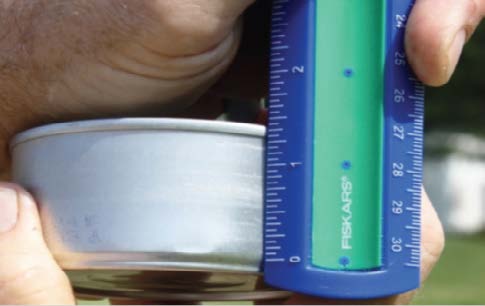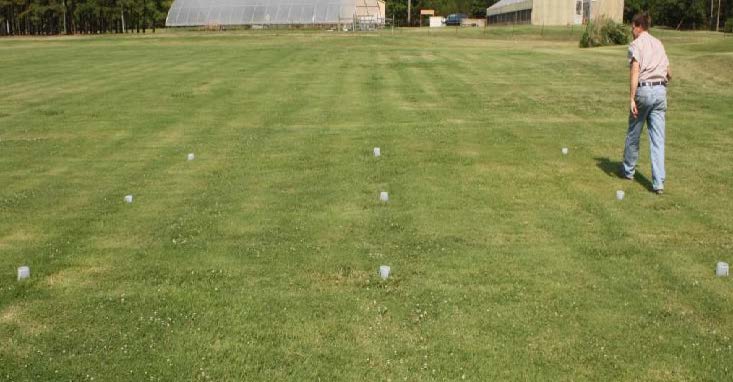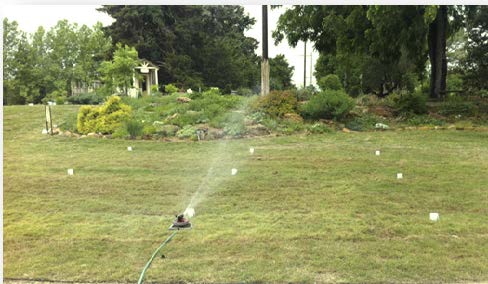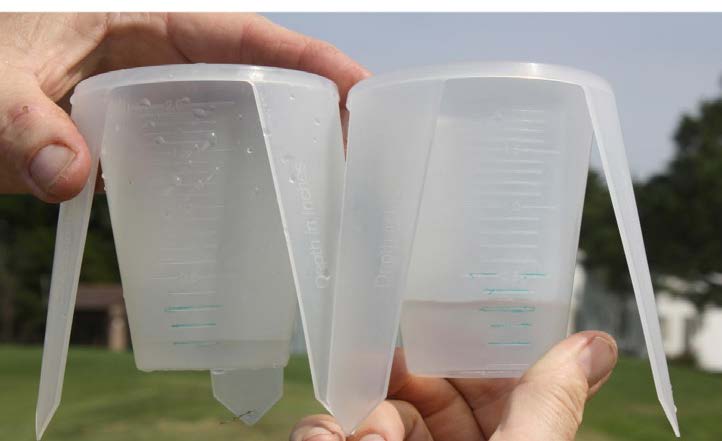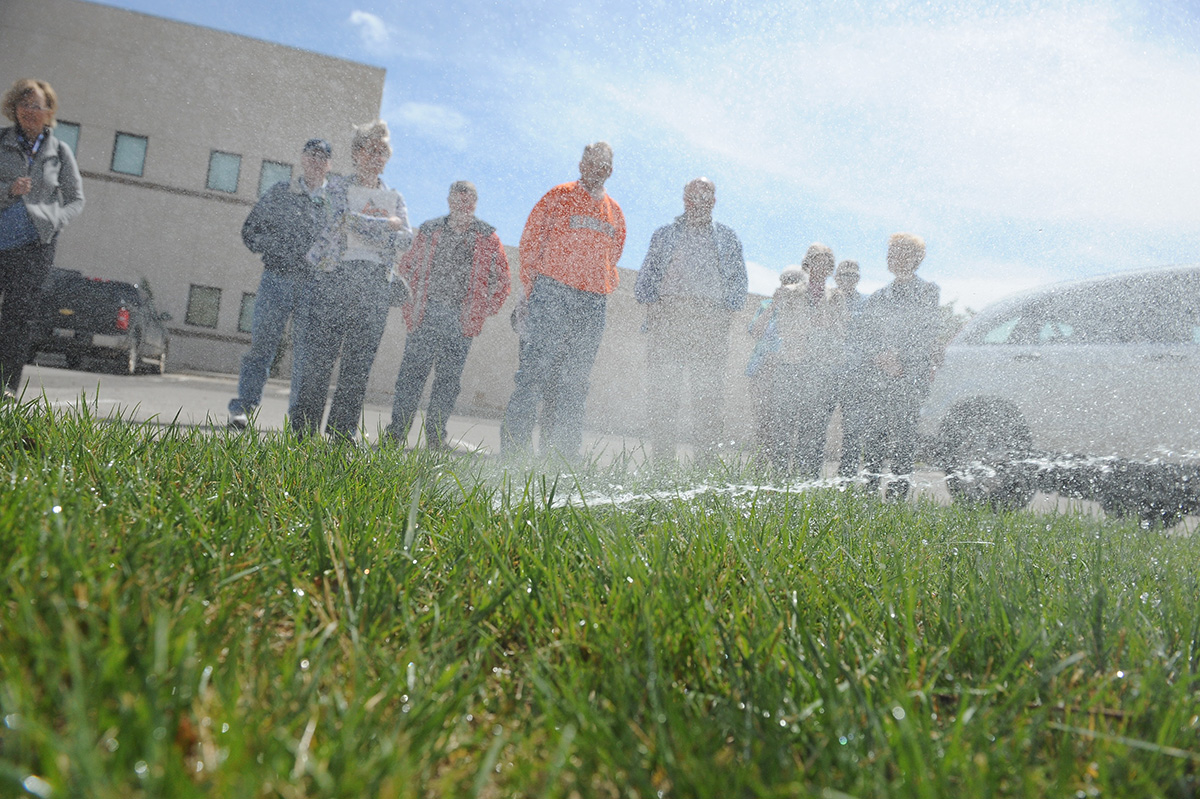Irrigation
Not sure how much to water?
Homeowners often wonder how long they should irrigate their lawns, but the amount of water cannot be measured by time. You can estimate how much water your yard is receiving by following a few simple steps.
- Gather 9 short, plastic rain gauges or use tuna cans to make your own.
- Place the rain gauges in a grid throughout the irrigated turfgrass areas in the lawn
Start at the edge of the perimeter, set one rain gauge down and take 3 steps and place
another cup. Repeat until you have a grid.
- Irrigate the lawn for 20 minutes on a relatively non-windy day.
- After irrigating for 20 minutes, combine and measure the amount of water in all of
the rain gauges, divide that by 9, then multiply by 3. The answer is the average volume
of water in 1 hour.
- At this point, the average volume can be, measured against what is required to maintain
a healthy lawn. Table 1 shows the approximate average monthly irrigation needed for
warm season and cool season grass
Table 1: Average monthly evapotranspiration (ETturf)1, precipitation2, and requirement for supplemental irrigation in Oklahoma County.
| Month | Average ETturf | Average Precipitation |
Average Irrigation Need3 |
|---|---|---|---|
| Warm Season Turfgrass | |||
| inches | |||
| April | 3..6 | 3.3 | 0.3 |
| May | 4.0 | 3.8 | 0.2 |
| June | 4.6 | 4.8 | 0.0 |
| July | 5.4 | 3.0 | 2.4 |
| August | 4.9 | 3.3 | 1.5 |
| September | 3.4 | 3.3 | 0.1 |
| Cool Season Turfgrass | |||
| inches | |||
| April | 4.7 | 3.3 | 1.5 |
| May | 5.3 | 3.8 | 1.5 |
| June | 6.1 | 4.8 | 1.3 |
| July | 7.2 | 3.0 | 4.1 |
| August | 6.5 | 3.3 | 3.1 |
| September | 4.5 | 3.3 | 1.2 |
1 Average ET from measurements recorded at the Spencer Oklahoma Mesonet site in Oklahoma County from 1994-2012 (www.mesonet.org)
2 Average Precipitation from measurements recorded at the Spencer Oklahoma Mesonet
site in Oklahoma County from 1994-2012 (www.mesonet.org)
3 Average irrigation need assuming all precipitation infiltrated into the soil profile
and no water was lost through surface runoff. It is also assumed that all infiltrated
soil is accessible by roots.
After completing this process, you’ll have a very good estimate of average irrigation
output in inches per hour.
Always adjust accordingly based on rainfall, temperature and wind. While bermudagrass
and buffalograss can be kept alive on lesser amounts, they may turn brown during extended
droughts.
Water Saving Tips
- Water deeply, but infrequently. Allowing the water to soak into the ground and letting the soil dry out between watering forces plants to produce strong, deep roots.
- Mulch. Mulch retains soil moisture, prevents erosion, controls weeds, and increases soil quality.
- Install a rain sensor. A rain senor turns the irrigation system off during and immediately after a rain event
- Don’t water hardscapes. Make sure sprinklers are watering the lawn and not the street or sidewalks.
- Avoid heavy pruning. Pruning stimulates growth and your plants will require more water.
- Mature plants require less water. Mature plants and trees have deep root systems and can be watered less frequently.
- Use a rain gauge. Typically, lawns requires 1 inch of water per week to stay healthy and up to 2 inches per week to stay green in the summer.
- Take advantage of your downspouts. Direct the downspout to your garden rather than draining towards the street.
- Fix or replace broken sprinkler heads. Take the broken irrigation head with you when buying a new one to ensure you get the right one.
- Adjust your irrigation system. Plants require less water in the fall and winter than in the spring and summer.
- Check for leaks. If you have a sudden increase in your water bill, dry or soggy areas in your yard, or overgrown turf areas you might have a leak.
Squeeze Every Drop
The City of Oklahoma City has partnered with Oklahoma State University’s Department of Horticulture and Landscape Architecture and Oklahoma Cooperative Extension Service to help promote outdoor water conservation.
For more information about how you can save water outdoors check out these websites:

